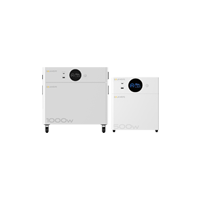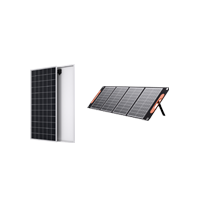Products Related
Can a portable power station run a refrigerator?
- Introduction
- Understanding the Power Requirement of a Refrigerator
- Selecting a Portable Power Station
- Importance of Choosing the Right Wattage Rating
- Calculating the Runtime of a Portable Power Station
- Considering Battery Capacity and Power Consumption
- Accounting for Efficiency Losses
- Factors Affecting the Actual Runtime
- Considering Manufacturer’s Specifications and User Reviews
- Conclusion
- FAQs
Introduction
When it comes to using appliances like refrigerators in situations where access to electricity is limited or unavailable, portable power stations offer a convenient solution. These compact devices can supply power to your refrigerator and other electronic devices, providing flexibility and peace of mind. However, it’s crucial to understand how to choose the right portable power station and calculate its runtime to ensure efficient operation. In this article, we’ll discuss the process of selecting a suitable portable power station for your refrigerator and estimate how long it can power your appliance in a given situation.
Understanding the Power Requirement of a Refrigerator
Before diving into the selection process, it’s essential to understand the power requirements of your refrigerator. In this scenario, let’s assume your refrigerator has a power requirement of 200 watts, which is slightly higher than average but still within the range of refrigerator power consumption. This power requirement refers to the amount of electrical power the refrigerator needs to function.
Selecting a Portable Power Station
To power your refrigerator effectively, it’s crucial to choose a portable power station with the appropriate wattage rating. Since your refrigerator requires 200 watts, it’s advisable to select a power station with a higher wattage rating to provide a safety margin and ensure efficient operation. In this case, let’s consider a 500-watt portable power station.
Calculating the Runtime of a Portable Power Station
Now, let’s determine how long a 500-watt power station can run your refrigerator. Typically, a 500-watt power station may have a battery capacity of around 480 watt-hours (Wh). To calculate the runtime, you need to divide the power station’s capacity (480 Wh) by the power consumption of your refrigerator (200 watts). Following this calculation, the runtime is estimated to be 2.4 hours (480 Wh / 200 W = 2.4 hours).
However, it’s crucial to consider efficiency losses that occur during power conversion. Portable power stations often have an efficiency rating of around 85%. To account for this, multiply the capacity of the power station by the efficiency rating (480 Wh * 85%) and then divide it by the power consumption of your refrigerator (200 watts). This calculation gives us an effective runtime of approximately 2.04 hours (480 Wh * 85% / 200 W = 2.04 hours).
Factors Affecting the Actual Runtime
While the above calculations provide estimates, it’s important to acknowledge that the actual runtime may vary due to various factors. Temperature can affect the efficiency of the power station and the performance of the battery. Power fluctuations in the electrical supply can impact the overall runtime. Additionally, the specific power station model may have its own efficiency characteristics. Therefore, it’s recommended to consider these factors and understand that the actual runtime might differ from the estimated values.
Considering Manufacturer’s Specifications and User Reviews
To gain a better understanding of the real-world performance of a chosen portable power station, it’s essential to refer to the manufacturer’s specifications and user reviews. Manufacturers often provide detailed information about their products, including runtime under specific conditions, efficiency ratings, and additional features. User reviews offer insights into the actual experiences of people who have used the power station, providing valuable feedback on its performance, durability, and overall satisfaction.
Conclusion
In conclusion, when selecting a portable power station to power your refrigerator, it’s crucial to choose a device with a higher wattage rating than the power requirement of your appliance. By calculating the runtime based on the power station’s capacity and efficiency, you can estimate how long it can power your refrigerator. However, keep in mind that real-world conditions and factors such as temperature, power fluctuations, and specific model efficiency can affect the actual runtime. Therefore, it’s always recommended to refer to manufacturer specifications and user reviews for a more accurate understanding of a portable power station’s performance.
FAQs
Q1: Can I use a portable power station to power other appliances besides a refrigerator?
Yes, portable power stations are versatile and can power a wide range of devices such as laptops, smartphones, lights, fans, and more. However, it’s important to check the power requirements of each appliance and ensure that the power station can handle the total power demand.
Q2: What factors should I consider when choosing a portable power station?
When selecting a portable power station, consider factors such as wattage rating, battery capacity, efficiency, charging options (solar, wall outlet, car charger), portability, and additional features like built-in AC outlets, USB ports, and DC outputs.
Q3: How long does it take to recharge a portable power station?
The charging time of a portable power station depends on factors such as the battery capacity, charging method, and charging speed. Some power stations can be fully charged within a few hours, while others may take longer. Refer to the manufacturer’s specifications for detailed charging time information.
Q4: Can I use a portable power station indoors?
Yes, portable power stations are designed to be used both indoors and outdoors. They provide a safe and convenient power source for various situations, including power outages, camping trips, road trips, and more. Just ensure proper ventilation and follow the manufacturer’s guidelines for usage.
Q5: Are portable power stations noisy?
No, portable power stations are generally quiet during operation. Unlike traditional generators, they don’t produce loud engine noises or emit fumes. This makes them suitable for indoor use, such as in homes, offices, or recreational vehicles (RVs).
How long can the S500 last as a backup power source?




